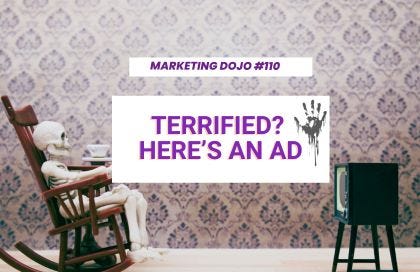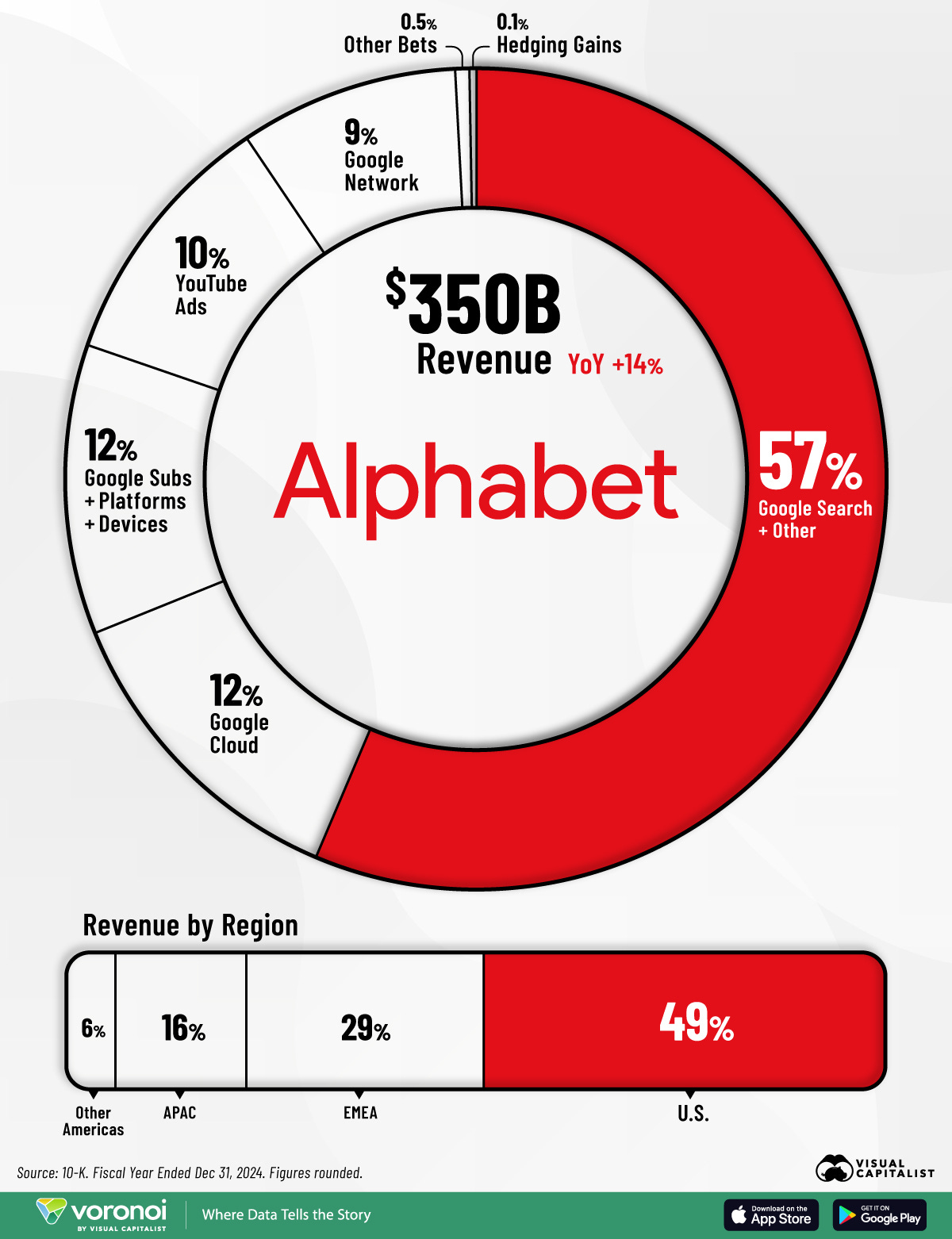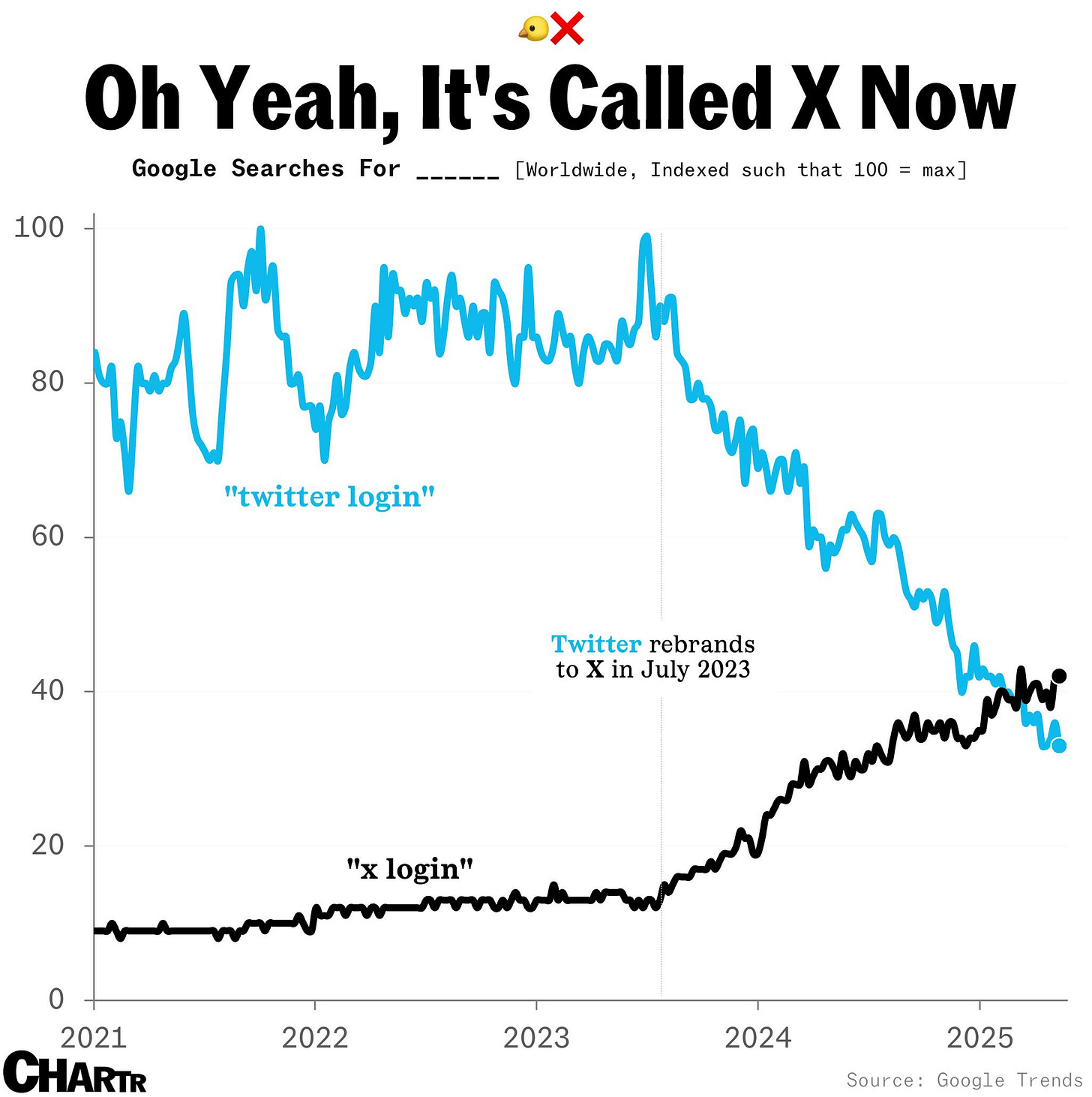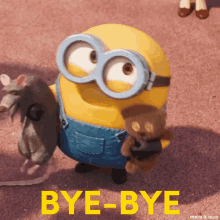MarketingDojo#110: ⏳ Cliffhanger. 💸 Clickbait. Thanks, YouTube.
An ad network for chatbots, Vaseline is verifying those crazy viral hacks, YouTube is serving you ads while you reach for your tissues and more.
"Your earrings are gorgeous."
I complimented a lovely lady at the eTail Asia Show last week.
Kara gave me the broadest smile ever. The earrings were from her boutique, where she curates accessories from around the world.
In the next ten minutes, we traded stories: her plans to scale her passion and my short-lived attempt at a fashion-discovery portal. (Spoiler: I failed, but learned plenty.)
While the discussions on stage largely centred around AI, this uniquely human interaction and connection energised me much more.
My hope? This week's newsletter leaves you energized and wiser about the truly beautiful world of marketing.
Here's what we will cover this week.
🤖 Wherever you search, Google gets paid
🧴 Creative Excellence: Vaseline verifies those TikTok hacks
❌ Twitter? What’s that??
🎬 YouTube’s Peak irritation points
And lots more.
A Quick Message: Here’s How To Get Started On Short Form Videos.
Since January, I've been experimenting with short-form videos on LinkedIn. (Yes, the cringe-factor is real.)
These short-form videos will become a mainstay on LinkedIn. The video creation has also helped me become a better communicator (you know the part about getting to the point).
But good content is just half the battle- Shubham is the editor-in-chief for my videos. He is also open to picking up 2 new projects. Reach out to him here.
And remember to check out the P.S section for a quick tip to improve your ChatGPT output.
Every Search Is Google’s Payday
Chatbots are going mainstream. They are quickly becoming people's go-to for search.
Orbit Media conducted a modest survey and found 62% of respondents use AI chatbots daily and 51% plan to increase their usage.
That trend makes Google's latest move a no-brainer.
Google is testing AdSense placements in third-party chatbots like iAsk and Liner. These ads blend into conversations rather than appearing as traditional banners.
Embedding ads in third-party chatbots creates a fresh revenue stream beyond classic search and display, future-proofing Google's ad business.
Why it matters:
Google risks losing precious ad impressions as search traffic shifts to chat interfaces. By baking ads into conversational AI, Google stays front and centre in every query, no matter how or where it's asked.
And let's be honest—AI chatbots aren't cheap to run. Those AdSense dollars can underwrite some of the hefty compute bills for these chatbot developers.
For context, Google's parent company, Alphabet, makes most of its money by advertising on Google-owned properties such as Search, YouTube, Gmail, Maps and more. However, a sizeable 12% is built on the advertising revenue from its network, i.e., third-party websites not owned by Google (2024 data).
As attention shifts to conversational search, advertisers will look for ways to integrate themselves into these new user experiences. Google's familiar AdSense network is a wise choice for a lot of folks.
Well played, Google, well played.
Creative Excellence: Vaseline v/s Viral Hacks.
Vaseline is like this humble magic potion.
Slugging overnight, DIY lip gloss & perfumes, leather bag care, pet paw protection and more. The list of Vaseline hacks is endless.
Which is why the Vaseline Verified campaign from this 150-year-old brand is a stroke of genius.
The campaign has three aspects:
Lab-Verified Hacks
Vaseline scientists put viral tips like DIY tinted gloss or leather scuff removal to the test. Only the tricks that pass get the coveted "Vaseline Verified" badge.
Creator-Led Demonstrations
Handpicked influencers show off their own vetted hacks, blending authentic creativity with that official seal.
Community Playlists
Users tag #VaselineVerified and #ItsAVaselineWorld on TikTok. Successful videos earn a spot on Vaseline's curated playlist, turning everyday experiments into a trusted resource.
With nearly 500 tagged videos and counting on TikTok, Vaseline proves that blending science with everyday ingenuity can refresh even the oldest brands. It's a masterclass turning simple household tips into a trust-building, buzz-worthy spectacle.
X Marks the Login
Welcome to X.
It feels like ages ago, but in July 2023, Elon Musk’s Twitter officially shed the blue bird for a black X. Now, “X login” searches have finally outpaced “Twitter login” on Google.
And if you say something today and nobody seems to hear it, don’t stress—when it comes to big shifts like Twitter’s switch to X, the internet itself needed a full 18–24 months to catch on.
Ad Break… Right After the Breakdown
Imagine you are watching a nail-biting scene on YouTube.
Our beautiful but heartbroken female protagonist is standing tentatively on a skyscraper ledge; city lights flickering behind her, wind whipping her hair.
Below, the male lead walks into frame, brooding like a K-drama hero, unaware of the moment unfolding above him. A heartbeat. A decision. She takes a step forward. And boom. A YouTube ad.
Last week, YouTube unveiled a new ad format called "Peak Points". This ad format uses Google's Gemini AI to identify the most emotionally intense moments in a video and drop ads immediately after them.
Here's how it works:
Gemini AI scans for drama: Think surprise proposals, epic reunions, or high-stakes finales. The AI finds those exact moments where viewer attention peaks.
Ad follows emotion: Once the emotional payoff lands, an ad is placed to catch your attention right when you're most engaged.
We know that ads that evoke joy, laughter, or even sadness tend to stick better in memory. But this is slightly different: contextual placement near emotion, not emotion in the ad itself.
So, will ads riding the wave of a dramatic plot twist still benefit from that emotional surge? Possibly.
What it means for everyone:
Advertisers may get better engagement stats, clicks, recall, and conversions especially if the viewer is emotionally primed.
YouTube and creators could see higher ad revenue, since "premium moments" command higher rates.
Viewers, on the other hand, might be less thrilled. Especially those not on YouTube Premium could now get ads in moments that feel the most jarring.
Peak Points is YouTube's latest experiment in attention economics: placing ads not just in the middle of a video, but at the emotional peak of the viewing experience.
Whether this leads to better branding or just more viewers rage-tapping "Skip Ad", we're about to find out.
Short Stuff
TikTok faces a potential fine of up to €1.4 billion from the EU for allegedly failing to provide adequate transparency about advertisements. (EU Digital Services Act is a big tech nightmare).
Pinterest apologised after an internal error led to mass account suspensions, with the company now reinstating affected accounts. (That gave Pinterest’s most loyal users a minor heart attack!).
Netflix has unveiled a major redesign of its TV user experience, featuring a more intuitive interface, enhanced recommendations, and new ways to search and discover content (Yet another TikTok-inspired redesign).
That’s a wrap on this week. Thank you for your time and attention. If you made it this far and enjoyed what you read, remember to leave a like. I appreciate your support.
I will see you in your inbox next Wednesday.
Regards,
Garima Mamgain
P.S: Don't just write a prompt. Include an example of what good looks like.
This simple change will dramatically improve the quality of AI outputs from any LLM model, whether ChatGPT or Claude.
For example, I always include two previous newsletters I liked when I ask AI to turn my voice notes into newsletter drafts. The model doesn't have to guess my tone, structure, or style.
What looks "good" varies wildly from person to person.
You help the model triangulate your specific preferences by providing examples much faster.
The result? Better outputs with less back-and-forth refinement.
So next time you prompt. Give an example. See the difference.








